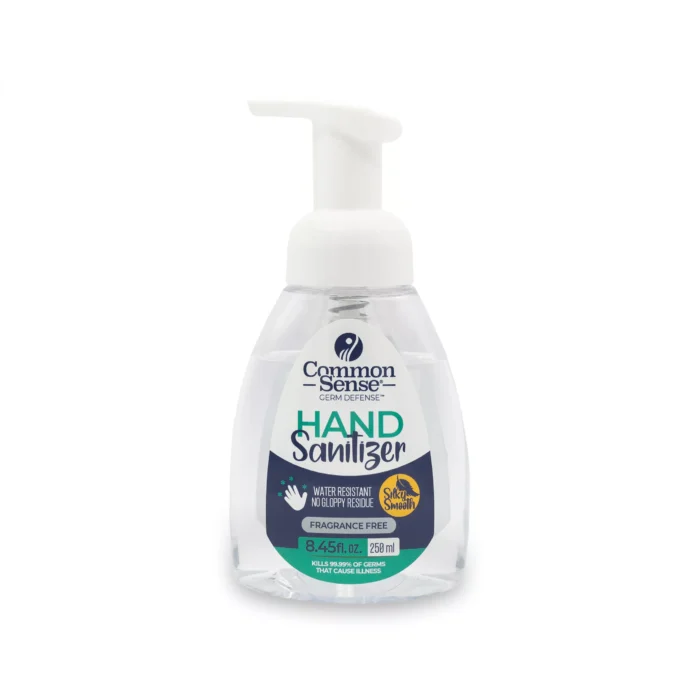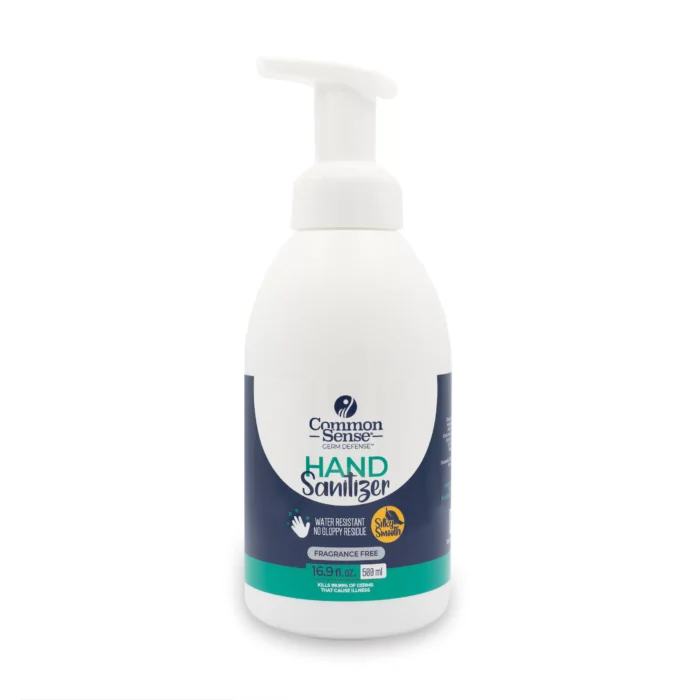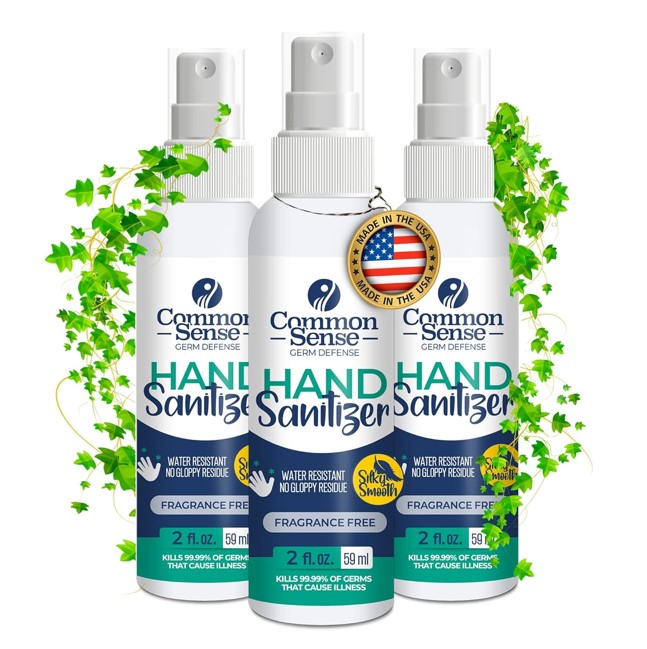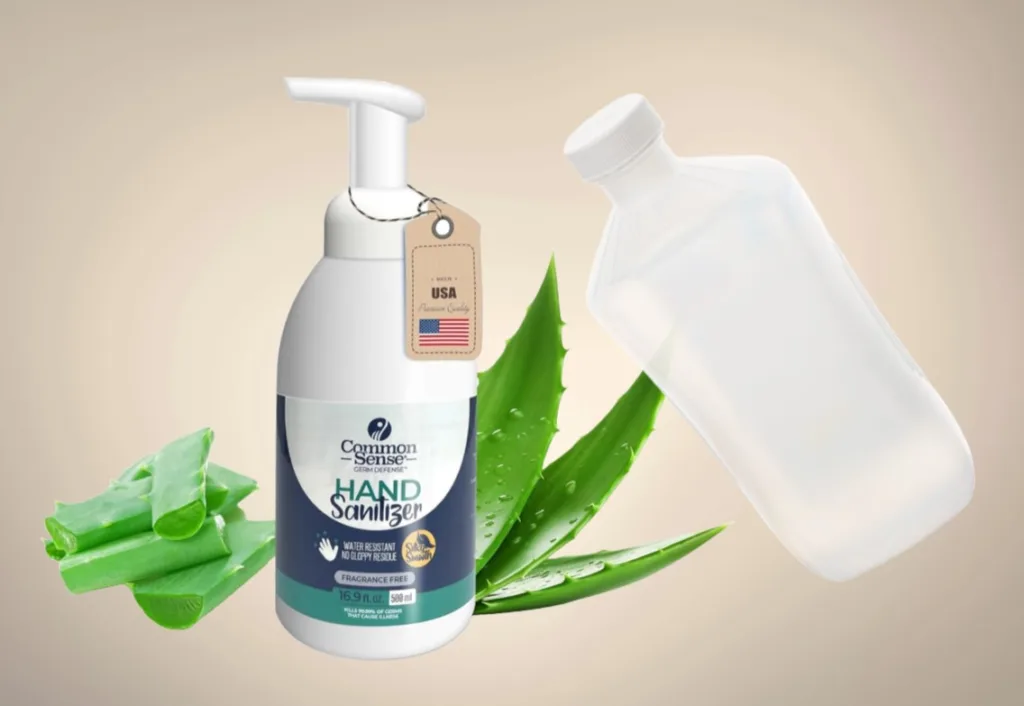
If you’re concerned about cleanliness and protection from germs, you may wonder whether rubbing alcohol, primarily composed of isopropyl alcohol, can serve the same purpose as hand sanitizers. When hand sanitizers, are categorized as being alcohol-based hand sanitizers, and contain ethyl alcohol among their active ingredients, does this mean they’re interchangeable?
What’s the difference between rubbing alcohol and hand sanitizer? Rubbing alcohol (isopropyl) and hand sanitizers aren’t the same. While both disinfect, rubbing alcohol isn’t skin-friendly. Hand sanitizers like Common Sense, with ethyl alcohol and moisturizing ingredients, ensure safe and effective germ protection without the risks associated with isopropyl alcohol.
How do alcohol concentrations factor into their effectiveness and safety, especially considering risks like alcohol poisoning? These are critical questions that warrant an in-depth understanding of each product’s composition and functionality.
Featured Sanitizing Products
What is Rubbing Alcohol?
Rubbing alcohol, known scientifically as isopropyl alcohol, is a clear, colorless liquid often used in homes, industries, and healthcare facilities. Unlike alcoholic beverages, it’s not intended for human consumption because it contains denaturants that make it both bitter and toxic.
Isopropyl alcohol is a powerful solvent that can dissolve a wide range of non-polar compounds. It also evaporates quickly, leaving nearly zero oil traces compared to ethanol. Because of these properties, rubbing alcohol is often used as a disinfectant to kill bacteria and other microorganisms on surfaces and skin.
Common Uses of Isopropyl Alcohol (Rubbing Alcohol)
One of the primary uses of rubbing alcohol is as a disinfectant. The Center for Disease Control (CDC) and other health related regulatory agencies recognize the effectiveness of isopropyl alcohol in killing many types of microbes very quickly – often within about 10 seconds. This makes it an essential tool in disease control, especially in healthcare settings where preventing the spread of pathogens is critical.
In addition to its use as a disinfectant, rubbing alcohol is also used as a solvent in various industries, a cooling agent in automotive applications, and even a treatment for muscle aches.
When considering personal hygiene, specifically hand hygiene, rubbing alcohol should not replace soap and water or alcohol hand sanitizers. According to the Centers for Disease Control and Prevention (CDC), washing hands with soap and water is the most effective method for reducing all types of germs and chemicals on hands. However, if soap and water are not available, using a hand sanitizer that contains at least 60% alcohol can help reduce the number of germs on your hands.
Comprehending Hand Sanitizers
What Constitutes a Hand Sanitizer?
Hand sanitizers are antiseptic solutions used to combat various pathogens that can cause disease. They come in several forms, including gels, foams, wipes, and sprays. The primary ingredient in most hand sanitizers is alcohol, which is responsible for their germ-killing power.
According to the Centers for Disease Control and Prevention (CDC), an effective hand sanitizer should contain at least 60% alcohol. The World Health Organization (WHO) also recommends alcohol-based hand sanitizers, specifically referring to them as a form of “hand rub” in their guidelines.
A great example of an effective alcohol-based hand sanitizer is the Common Sense brand manufactured by Microbe Solutions. This product not only kills germs effectively but also moisturizes the skin to prevent dryness. This is an excellent addition to your hand hygiene routine when soap and water aren’t readily available. However, while hand sanitizers can reduce the number of microbes on hands, they do not eliminate all types of germs.
Choosing Ethanol Over Isopropyl Alcohol for Skin Health
In the pursuit of effective hand sanitization, the type of alcohol used matters significantly. A comprehensive study published in the International Journal of Cosmetic Science (2017) compared the impact of different alcohols on skin health. Notably, isopropyl alcohol and n-propanol were found to cause substantial damage to the skin’s condition and function.
In contrast, ethyl alcohol, also known as ethanol, showed the mildest effects on keratinocyte activity and skin cytokine secretion. This study, both in vitro and in clinical settings, concluded that ethanol-based sanitizers are better tolerated by the skin, especially in high-use scenarios. Common Sense hand sanitizer, containing ethanol, aligns with this research, offering effective germ protection without compromising skin health. Read the full study here.
The Hazards of Isopropyl Alcohol on Skin: A Critical Insight
While isopropyl alcohol, commonly found in rubbing alcohol, serves various purposes, its direct application on the skin poses significant risks. Unlike rubbing alcohol, isopropyl alcohol is undiluted, making it more hazardous and unsuitable for routine home use.
Undiluted Isopropyl Alcohol: Not for Skin Application
Applying isopropyl alcohol to the skin is strongly discouraged due to its potential to enter the bloodstream, leading to poisoning. This concern is substantiated by a study published in Contact Dermatitis (2011), revealing isopropyl alcohol as a potential allergen, causing allergic contact dermatitis in certain cases. The research presented a series of 1450 patients patch tested with isopropyl alcohol, demonstrating allergic responses in 44 patients, including cases of occupational hand eczema and skin lesions following product use containing isopropyl alcohol.
Concentration Matters: Risks Beyond 80% Isopropyl Alcohol
It’s crucial to note that if the concentration of isopropyl alcohol in rubbing alcohol exceeds 80%, it not only loses some antibacterial properties but also becomes more hazardous. Risks associated with isopropyl alcohol application include skin irritation, a concern highlighted in the Contact Dermatitis study.
Guidelines for Accidental Skin Exposure
In case of accidental skin exposure to isopropyl alcohol, prompt action is essential:
- Remove Contaminated Clothing: Swiftly remove any clothing that came into contact with isopropyl alcohol.
- Wash with Water and Soap: Wash the exposed skin thoroughly with copious amounts of water and soap.
- Shower If Possible: If feasible, take a shower to ensure that running water effectively eliminates any remaining traces of the liquid.
These precautions underscore the importance of exercising care and prudence when handling substances containing isopropyl alcohol, emphasizing its unsuitability for direct skin application.
Discovering the Benefits of Common Sense Hand Sanitizer
Hand sanitizers have become a staple in our daily lives in our effort to achieve cleanliness and protection against disease-causing germs. The long-lasting, ethanol alcohol-based hand sanitizer from Microbe Solutions stands out as a safe and preferred solution. Not only does it offer effective sanitation, but it also boasts additional antimicrobial and moisturizing ingredients. What sets this product apart is its unique blend of ingredients, including aloe, which ensures your skin remains protected and nourished.
The Power of Antimicrobial Ingredients
The Common Sense hand sanitizer from Microbe Solutions is not just an alcohol-based sanitizer; it’s a potent weapon against a broad spectrum of germs. It contains additional antimicrobial ingredients that complement the germ-killing power of alcohol, ensuring you get comprehensive protection.

These extra antimicrobial components work by inhibiting the growth and spread of bacteria, viruses, fungi, and other harmful microbes. This means that even after the alcohol has evaporated, your hands still enjoy a level of protection.
A Nourishing Touch with Aloe
While most hand sanitizers are notorious for leaving hands feeling dry and chapped, the Common Sense hand sanitizer takes a different approach. It contains aloe, a natural ingredient known for its soothing and moisturizing properties.
Aloe helps to counteract the drying effect associated with rubbing alcohol, leaving your hands feeling soft and smooth after each use. It forms a protective barrier that helps retain moisture, preventing dryness and irritation. This makes the Common Sense hand sanitizer from Microbe Solutions a perfect choice for those with sensitive skin or those who use hand sanitizers frequently.
Lasting Protection
The Common Sense hand sanitizer offers more than just immediate protection. It provides a lasting shield against germs, with applications that can last up to one year from treatment. This long-lasting effect ensures that your hands remain protected for longer, offering peace of mind in today’s germ-conscious world.
Rubbing Alcohol Versus Hand Sanitizer
Hand sanitizers play a crucial role in promoting hand hygiene and preventing the spread of diseases. While both alcohol-based and alcohol-free hand sanitizers can reduce the presence of pathogens, alcohol-based versions like the Common Sense hand sanitizer from Microbe Solutions provide a more comprehensive solution. Besides delivering effective sanitation, this product incorporates additional antimicrobial ingredients for broad-spectrum germ protection and aloe to counteract the drying effects of alcohol.
The long-lasting protection offered by this hand sanitizer makes it an excellent choice in our continuous effort to maintain cleanliness and keep disease-causing germs at bay. Remember, while hand sanitizers are a vital tool in disease prevention, they should not replace regular, thorough hand washing with soap and water whenever possible.
